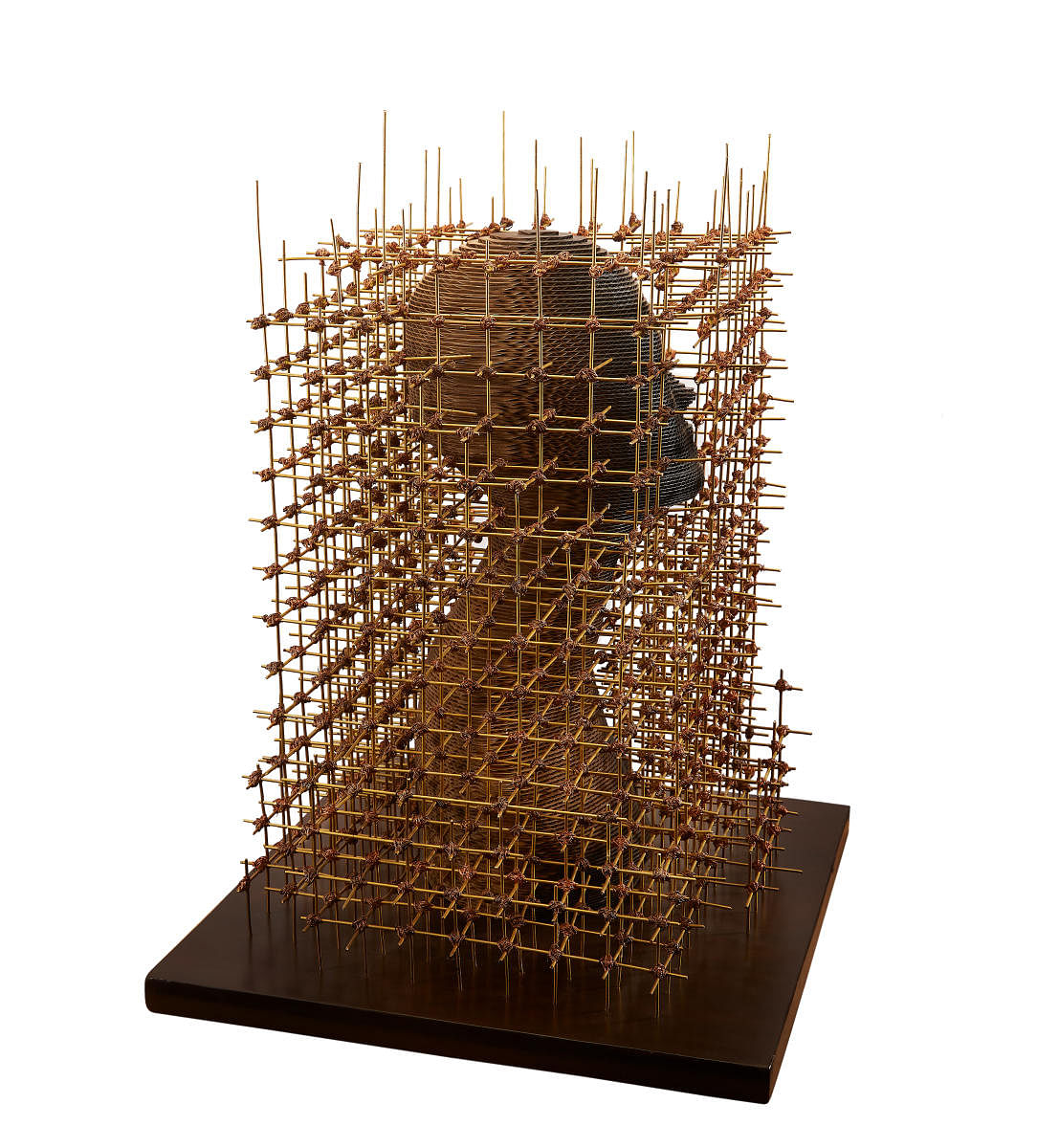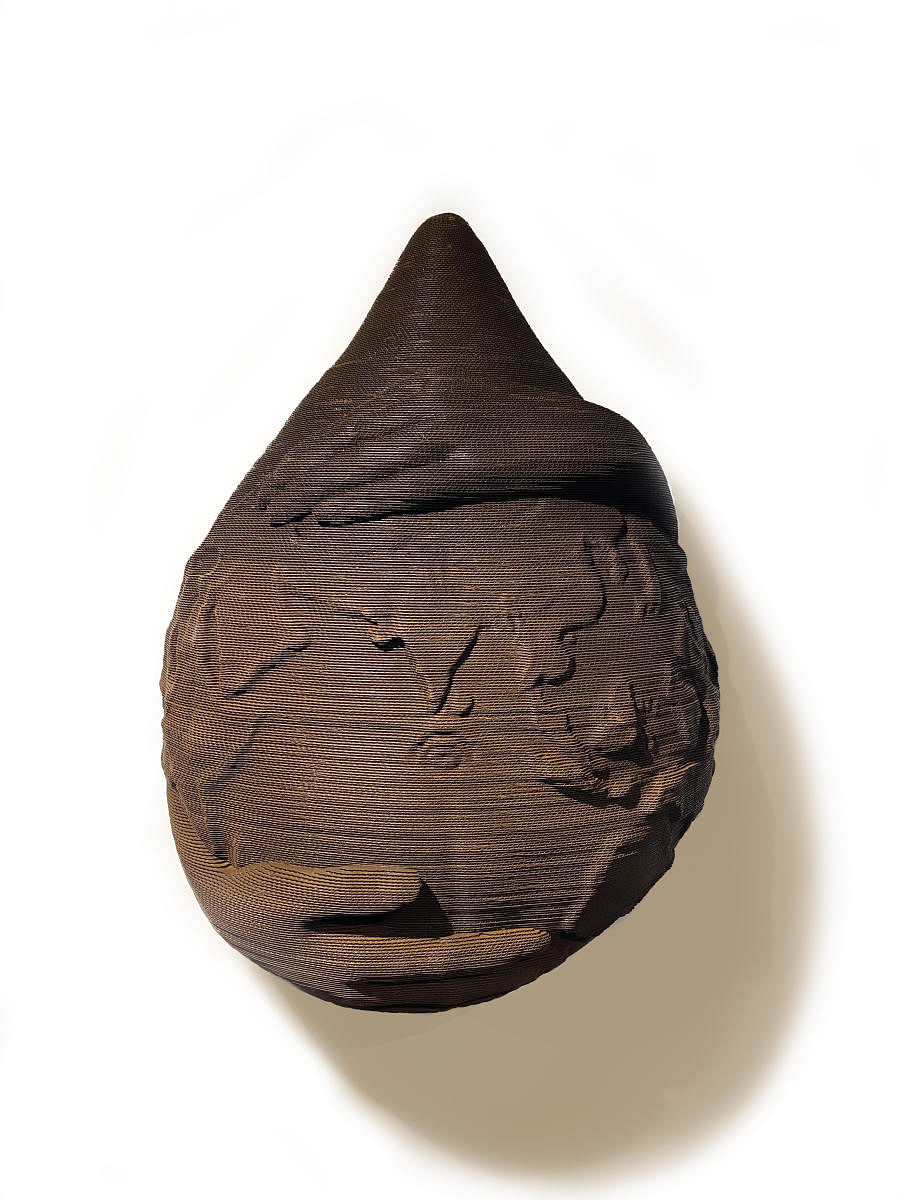

Mumbai-based contemporary artist Bandana Jain funnels her imagination by upcycling corrugated cartons to create art. She calls it The Brown Age — withered, weathered, wearing emotions as she pours in freely from her own experiences. Her works shatter gender bias. “My focus is on the situation of women in our society. We are not only meant to raise children and perform household chores. As women, we need to understand and appreciate our rights and capabilities as we are both deserving and worthy,” she says. Bandana is known for merging functionality into her creations, along with thoughtfulness towards the environment.
“I have been facing discrimination since my childhood,” confesses Bandana. “My upbringing was very different from my male cousins. I was brought up in a joint family where the male children were sent to a good English medium school while the female children had to compromise with education available locally. But I feel this discrimination and consequent lack of opportunity led me to dream and aspire to do something concrete in my life. The moment I got the opportunity to study at the prized Sir J J School of Art, in Mumbai, I grabbed it with both hands.” Her 20+ artworks bring in her definitions of gender equality and celebrate the strength of women at the same time. The stunning mural Centre of Universe — Droplet celebrates a solo droplet of water, the womb of a pregnant woman and a carved map of the world — all in one. “There are different interpretations for this artwork, the obvious one is to protect Mother Earth,” explains Bandana, having drawn inspiration from the young mothers and their unconditional love for their young ones. It is amazing how life arrives in the womb of a mother, changing the entire ecosystem. The carefree girl now has an unborn creature as the centre of her universe.” The womb, in the shape of a droplet, depicts life nourished within the consistency of the fluid, and the world map engraved on her womb cups her small, new world. Restoration of Humanity is another striking creation aimed at breaking gender stereotypes, with the feminine form encased in a scaffolding grid. “As women, we are a powerful resource silently working to create harmony in our ecosystem. Society does not recognise our contribution. Restoration of Humanity talks about the repercussion of all the negativity around us including domestic violence and suppression,” she says, bringing in her personal emotions and experiences to create subtle messages, through her artworks including Pocket of Equality, Diversity and Inclusion, and Fabricated Tales.
The rapid mechanisation that brought in sterile boxes and mass-produced corrugated sheets made way for rapid transit goods, now reflecting a compartmentalised life for us where our requirements are fulfilled online and home-delivered to us in a box. Bandana gives a new lease of life to these boxes. By compiling the discards, she makes them emote and support a gender-neutral society. For instance, her cardboard sculpture, Diversity & Inclusion reflects her feminine perspectives against discrimination and violence, emphasising more on self-affirmation, equality of rights, sexual diversity, and gender variance. “Diversity and inclusion are important when we talk about the work environment for women. It is established that gender-diverse and inclusive teams outperform gender-homogeneous, less-inclusive teams by an average of 50%. A year and a half into the Covid-19 pandemic, women in the corporate sector were even more burned out than they were last year — and increasingly more so than men. Despite this, women leaders are stepping up to support employee well-being and diversity, equity, and inclusion efforts, but their work is not getting recognised. Women are still being judged and forced to compromise in situations under pressure. That is the dichotomy of life. I feel the world will be a better place if we all start having a gender-neutral approach,” says Bandana. The fluidity of perspectives has seeped into her own creations as well. “Initially I used to do geometrical shapes, my works used to be quite rigid,” she confesses. “Gradually, I changed my style and started doing more fluid and organic forms.”
The Brown Age then brings in the works she has shaped over the past decade, carrying a humble material to fruition.